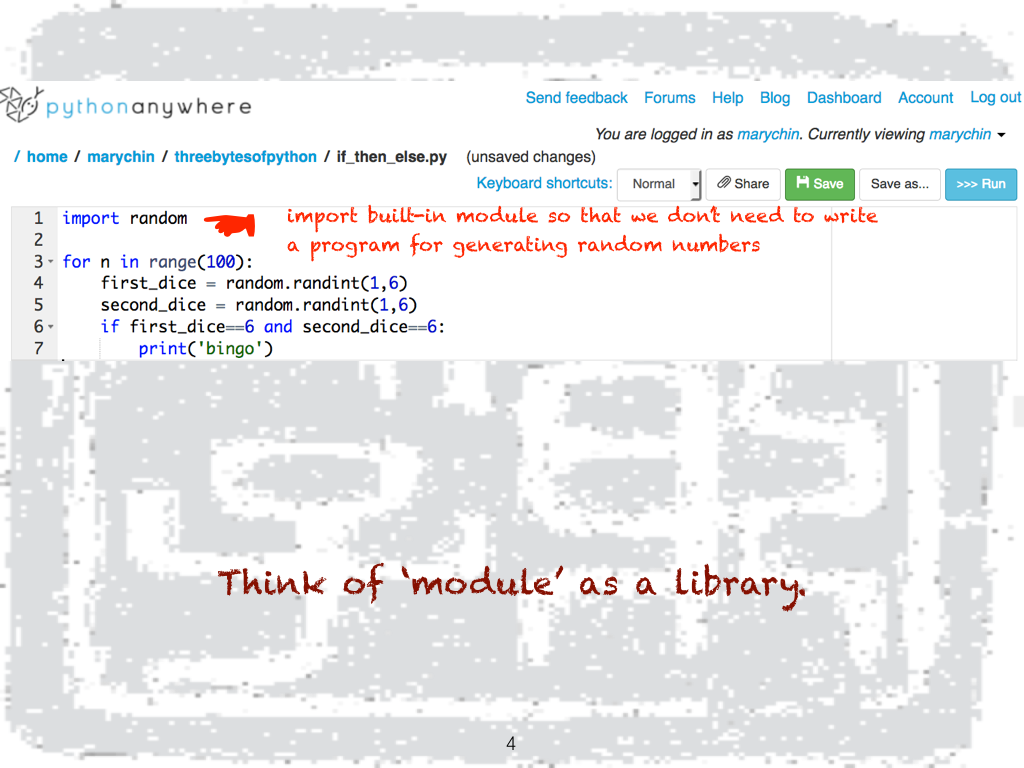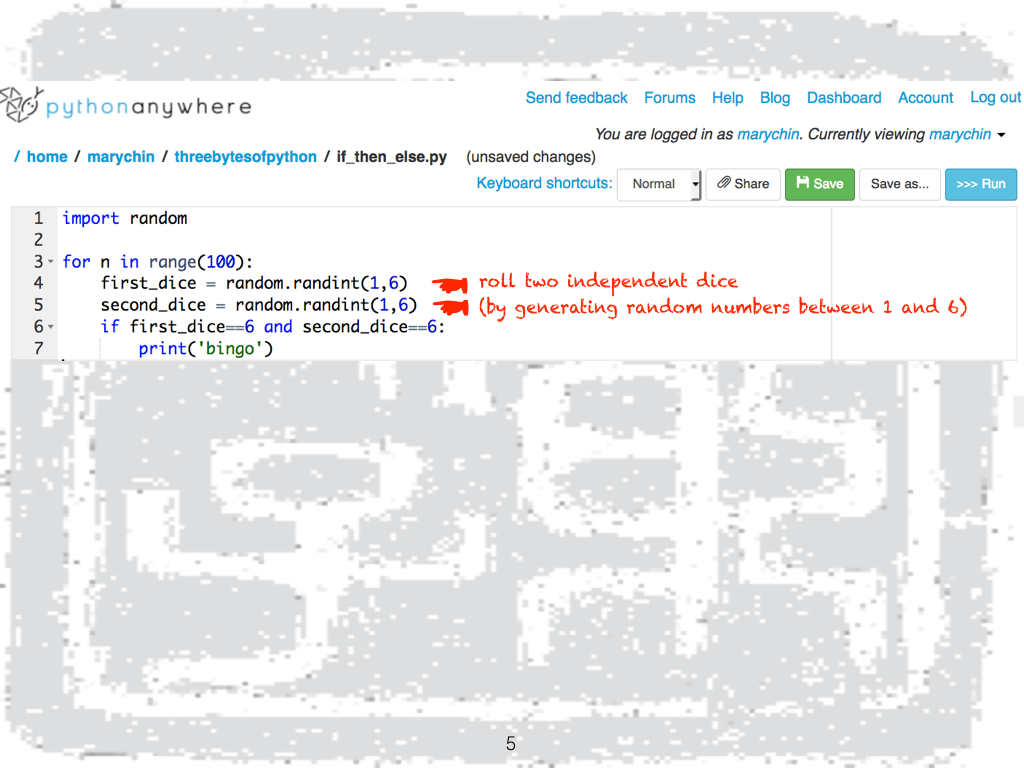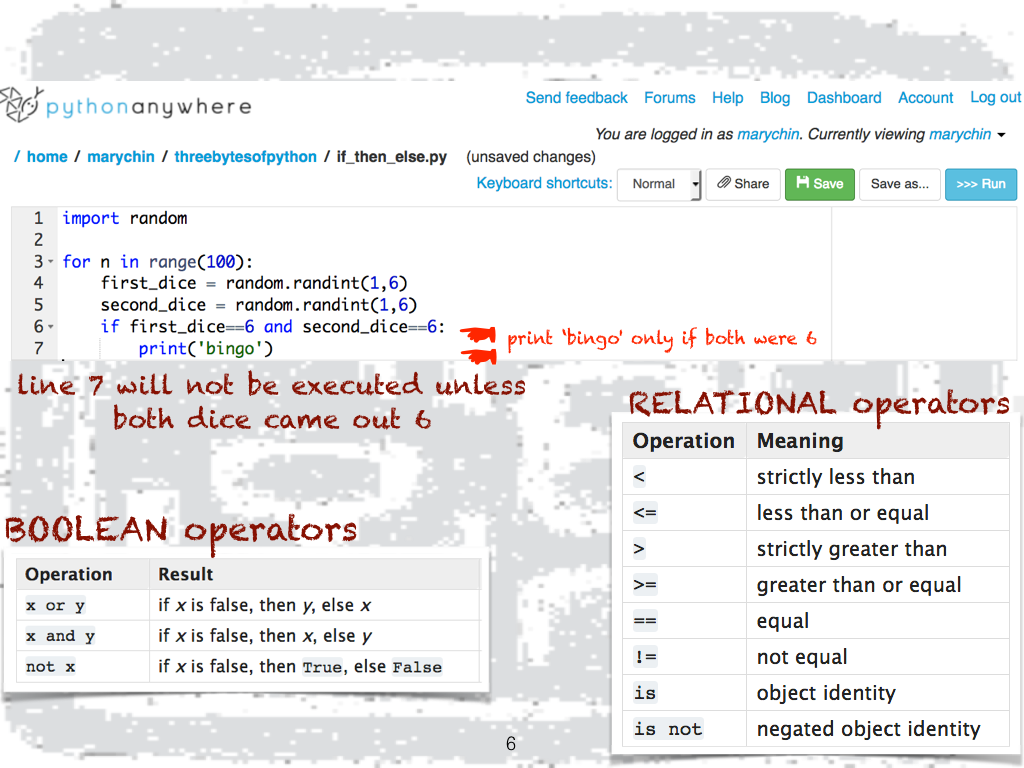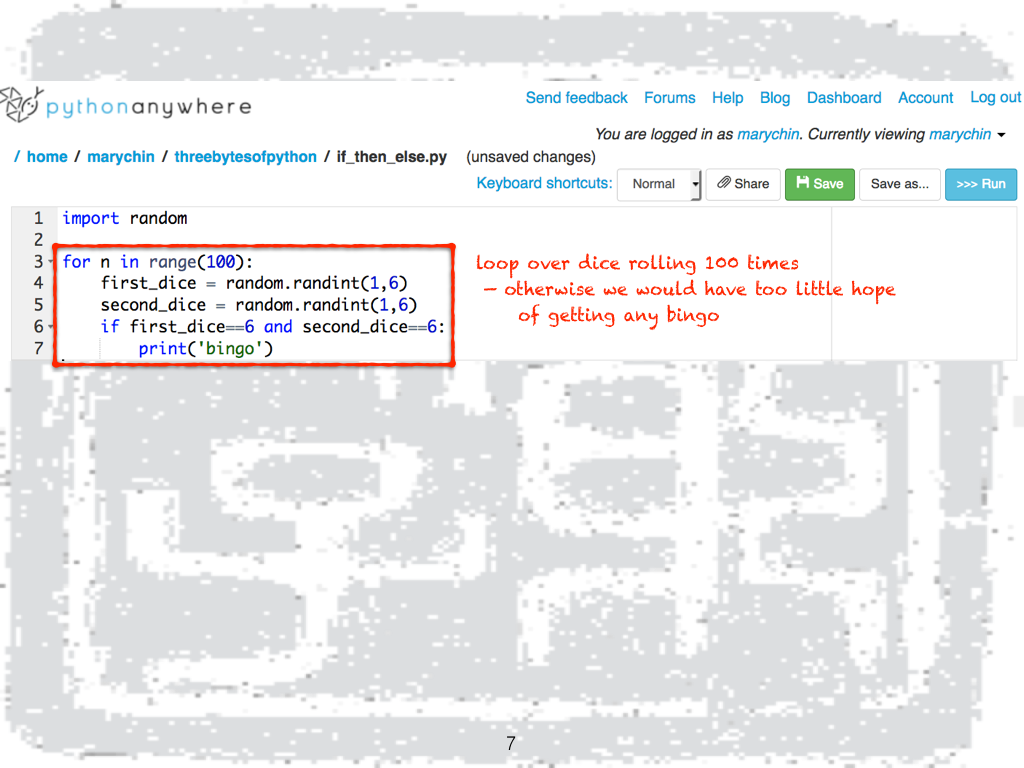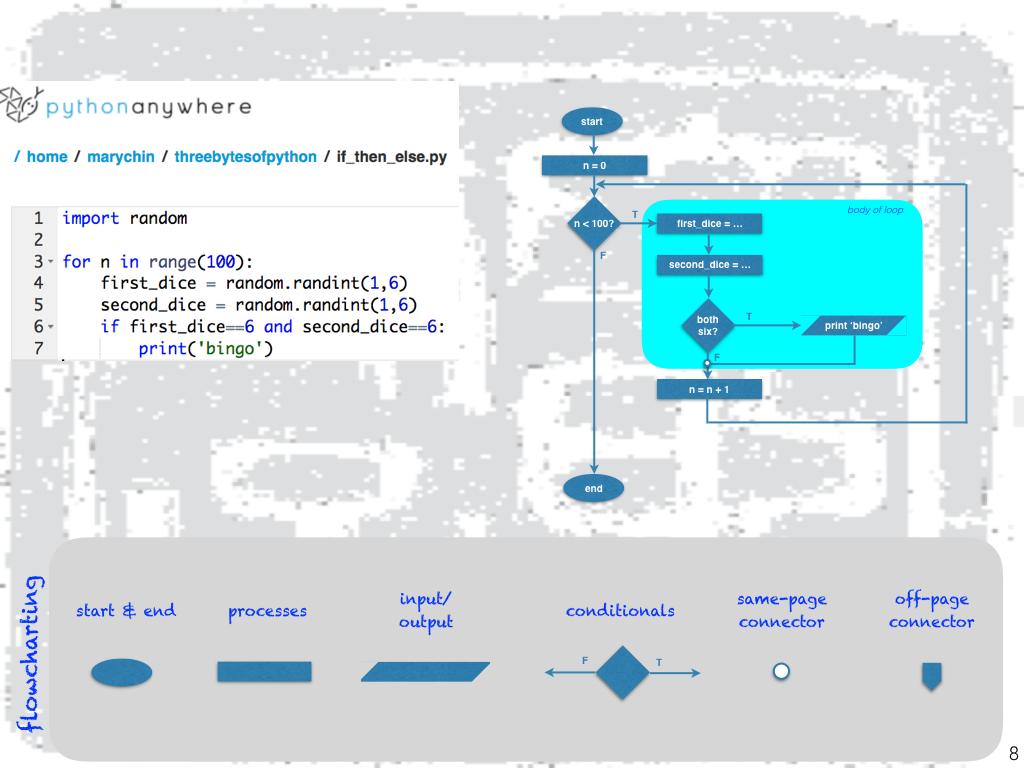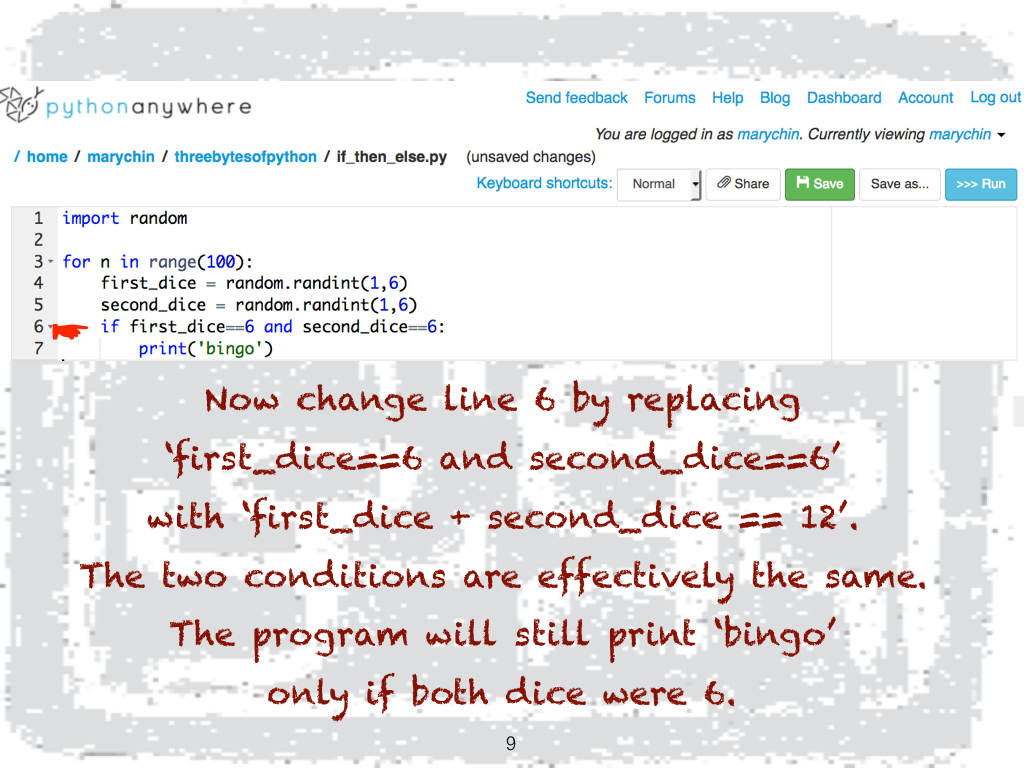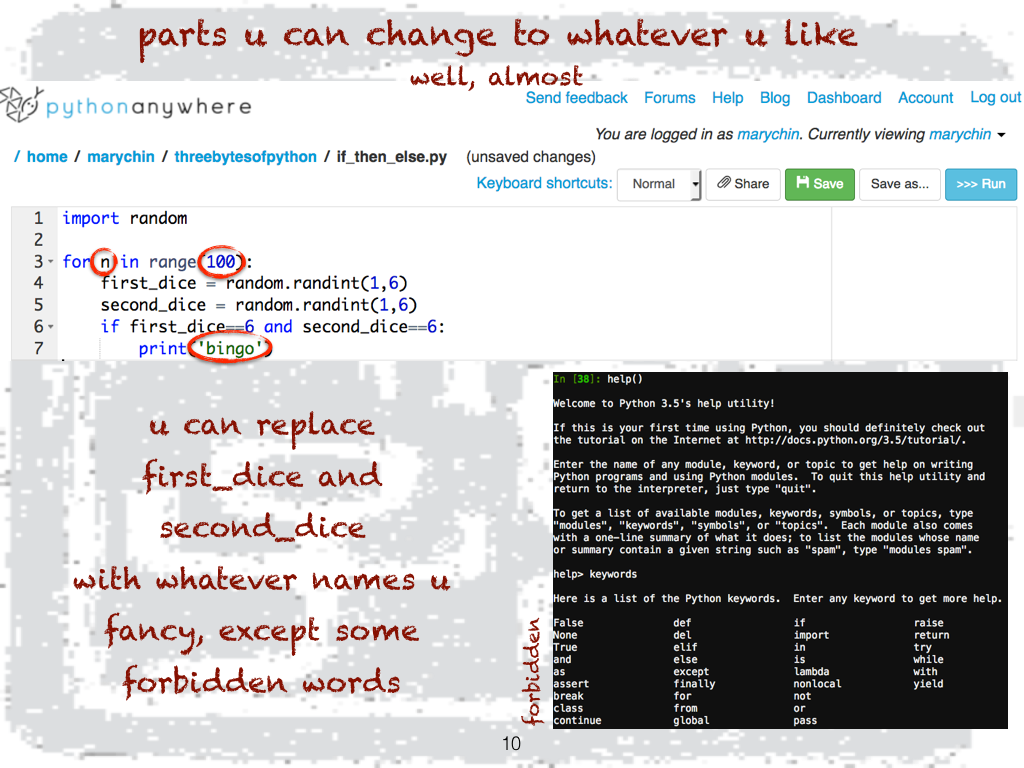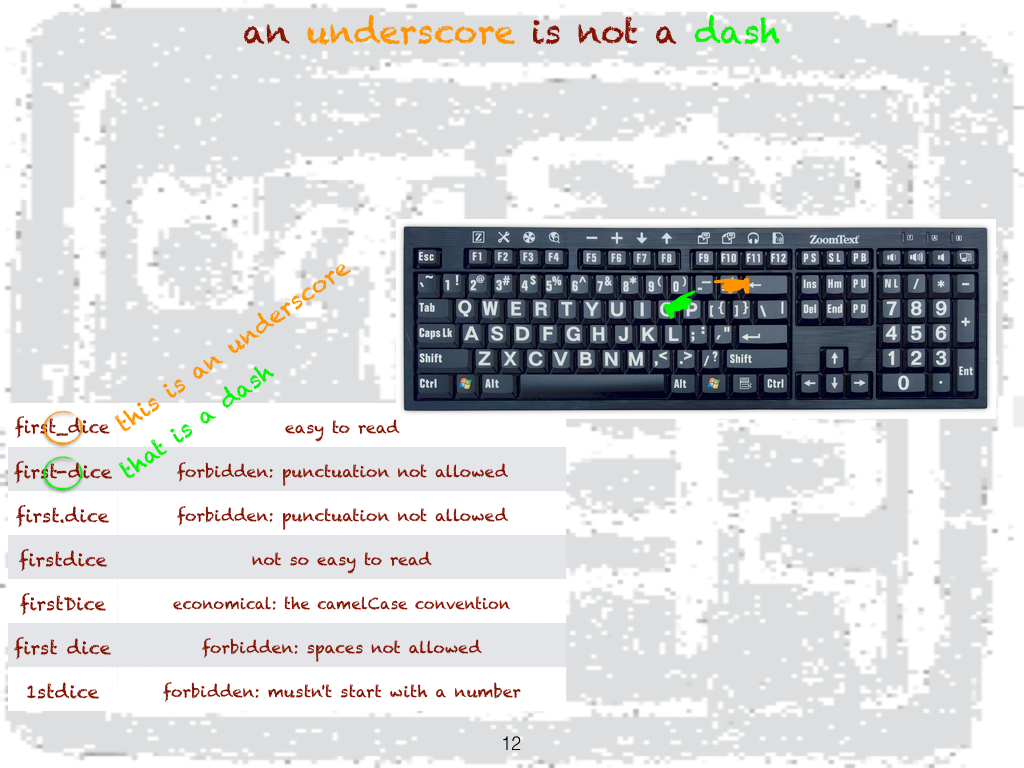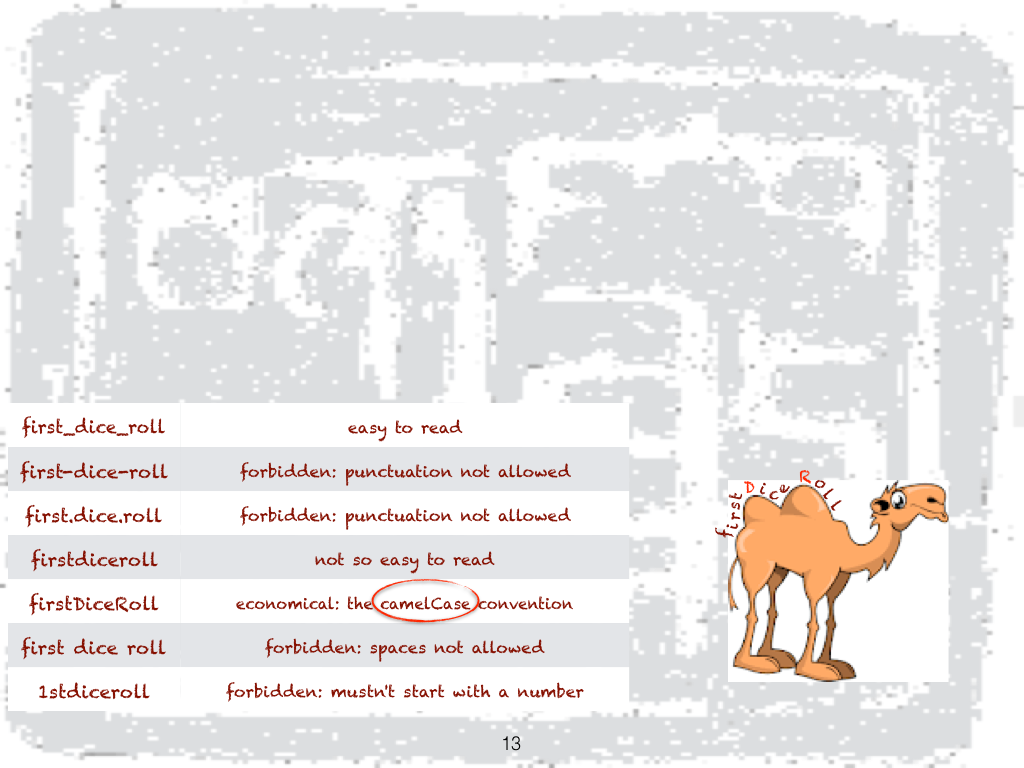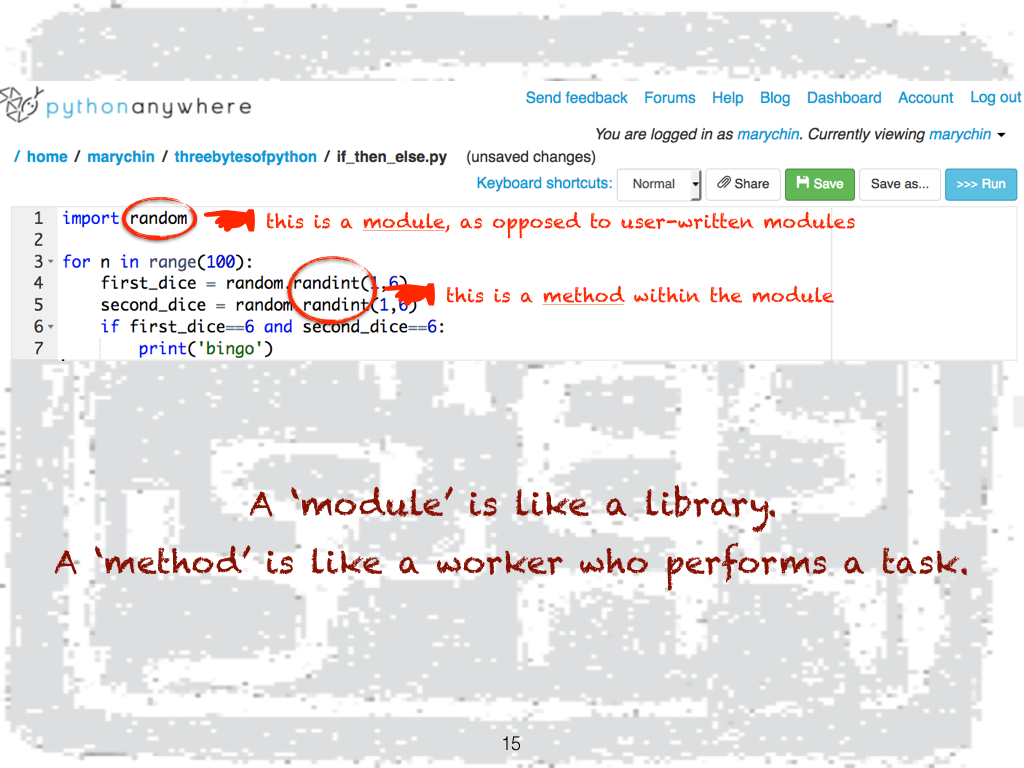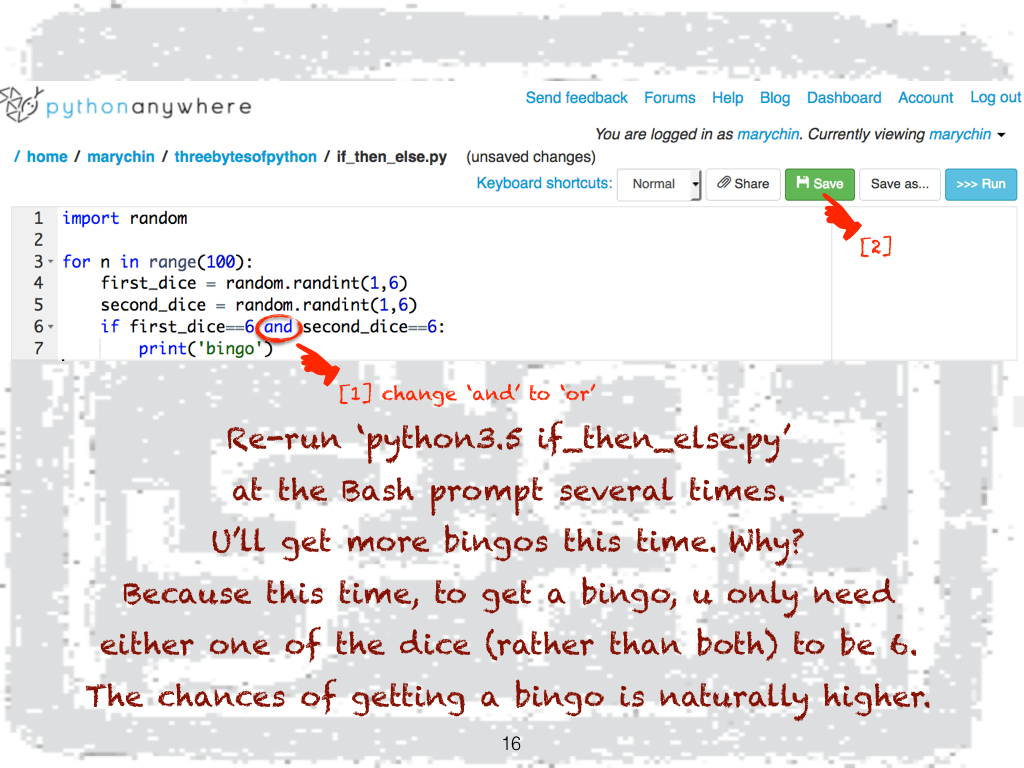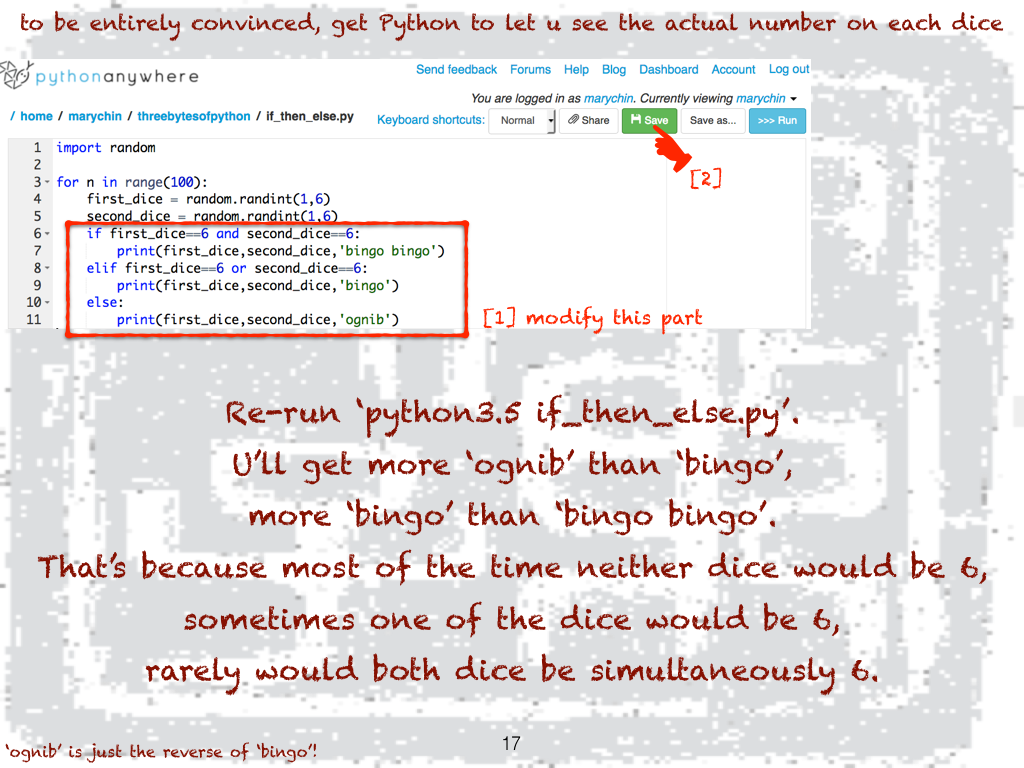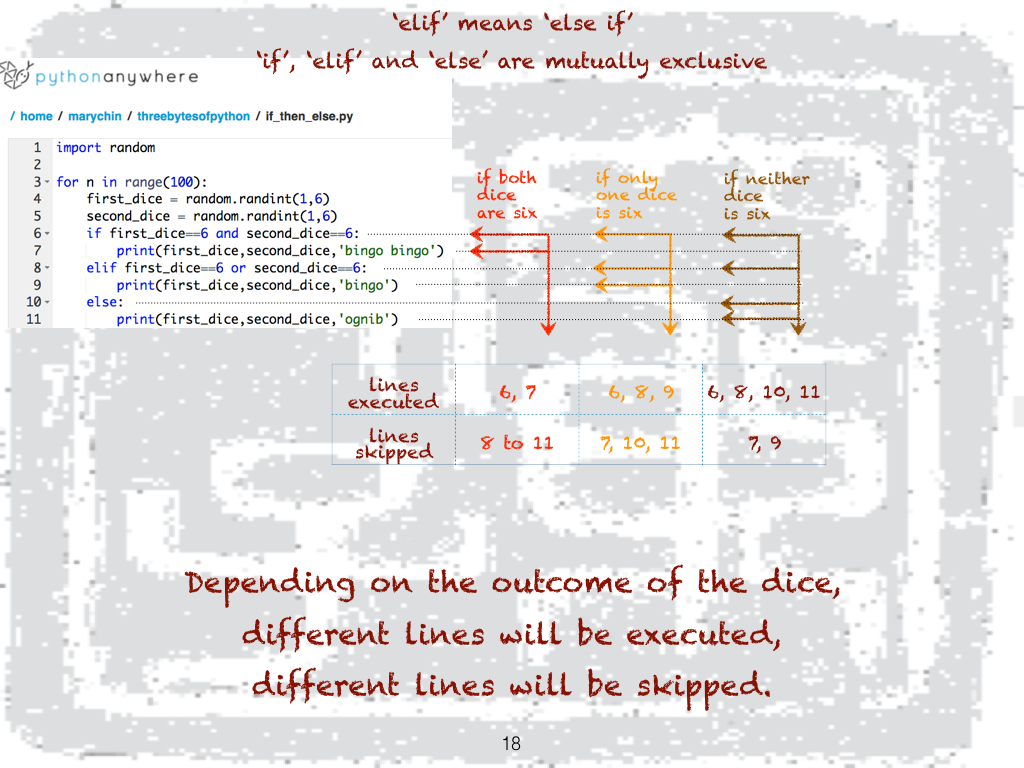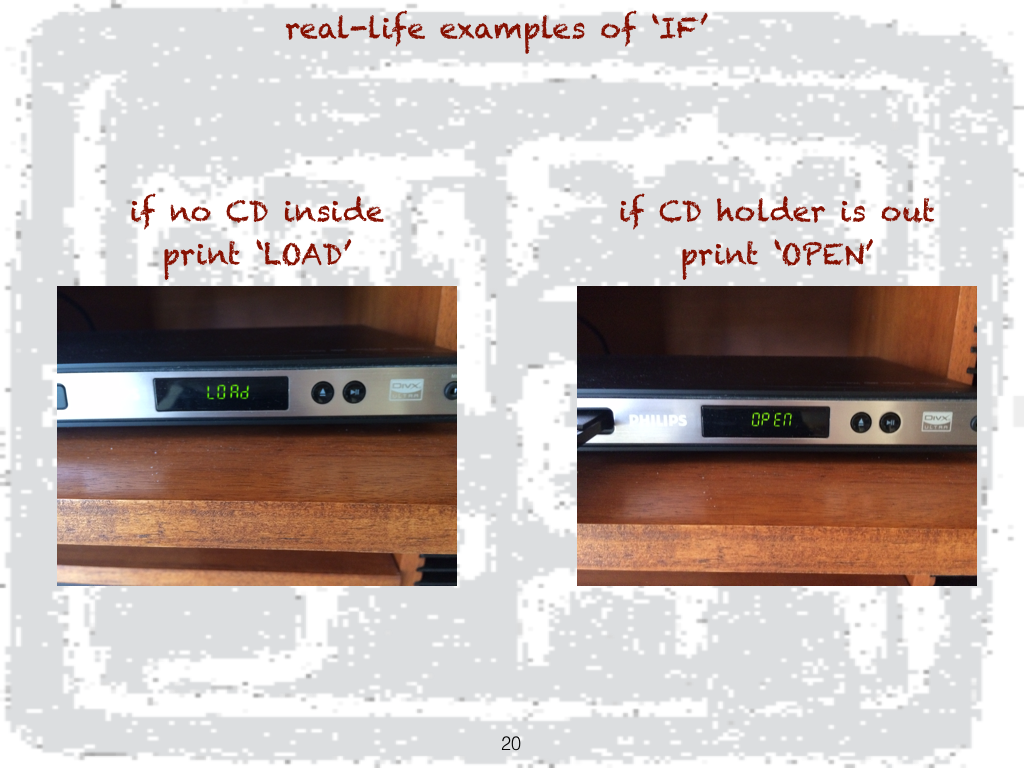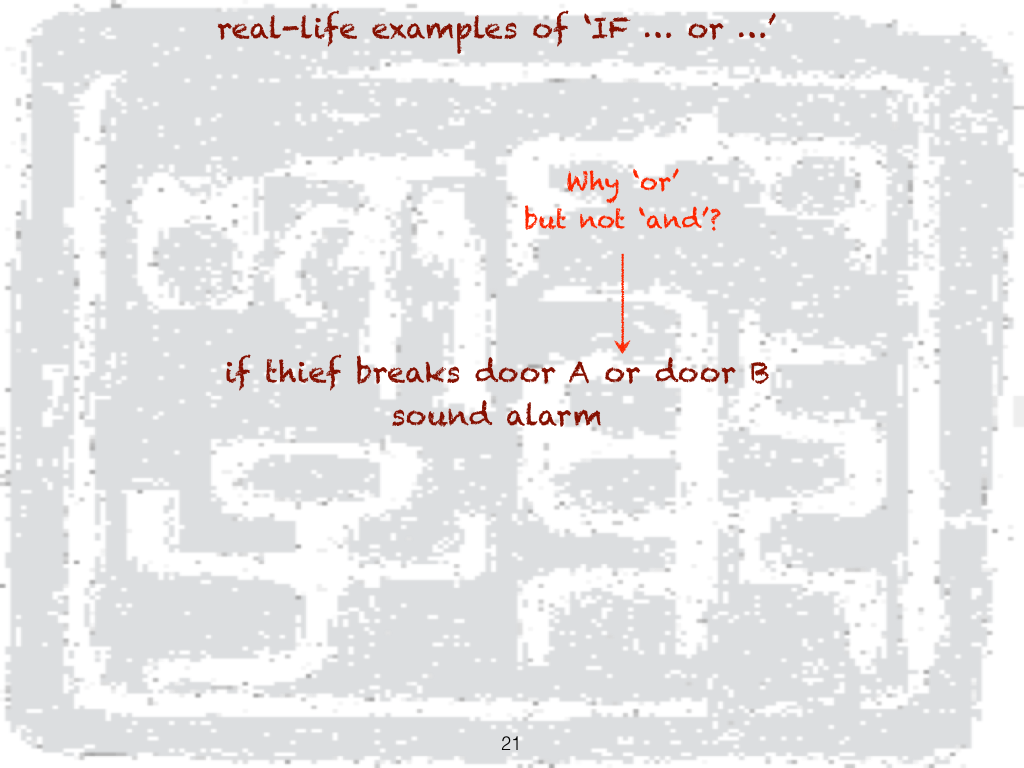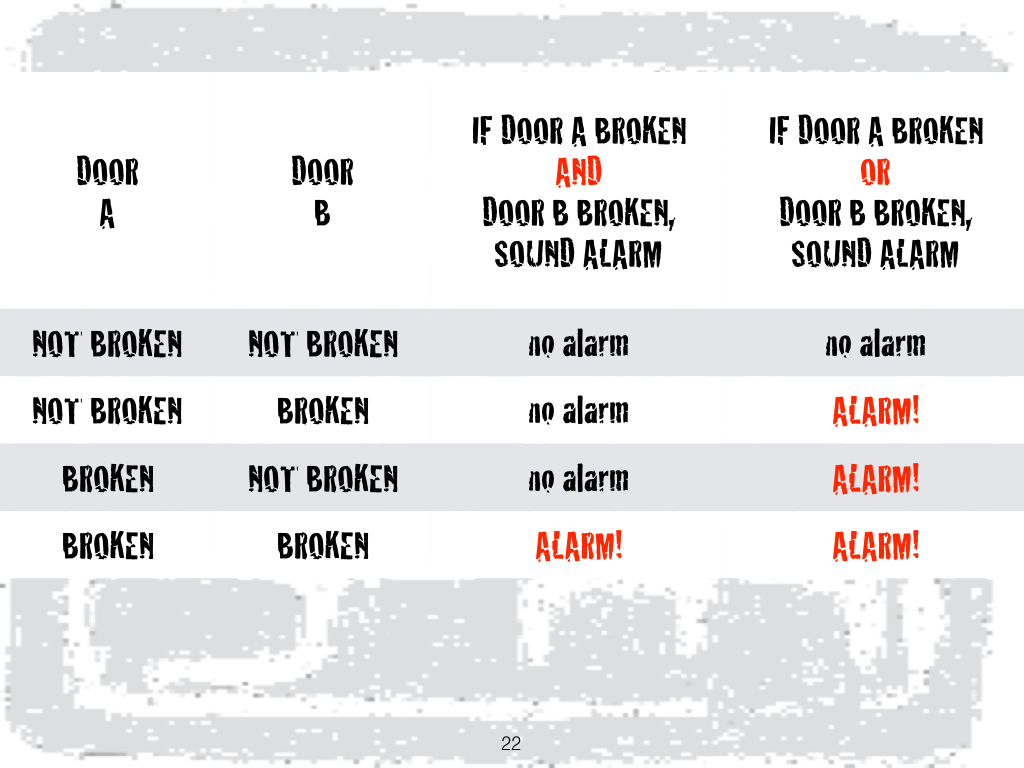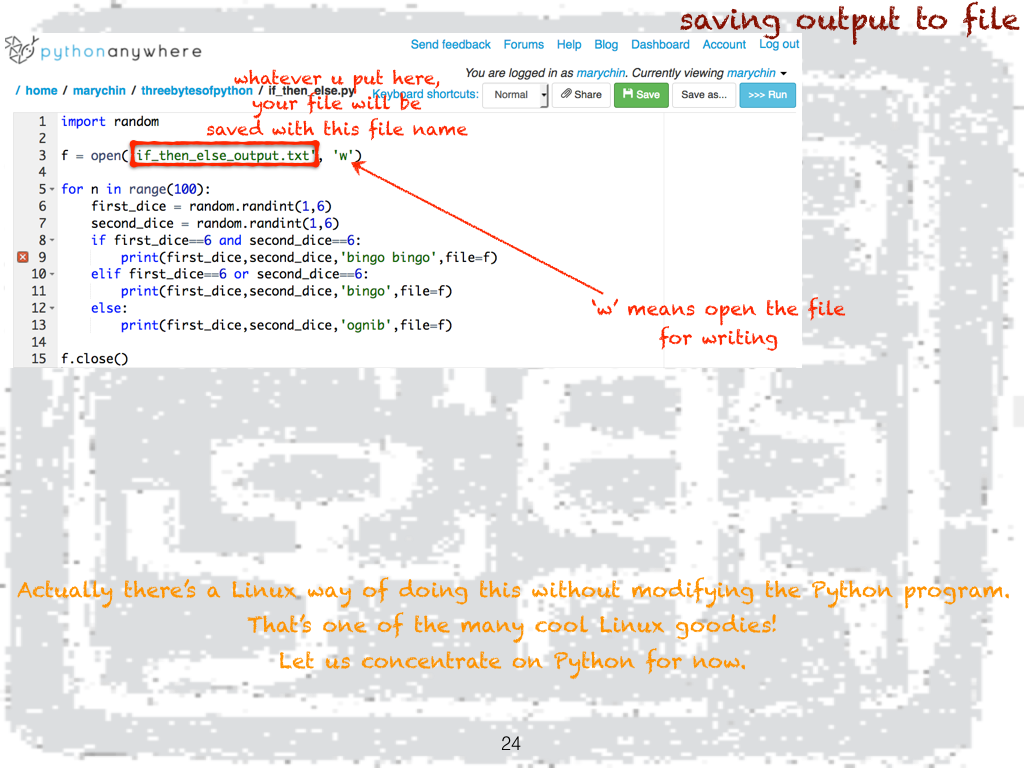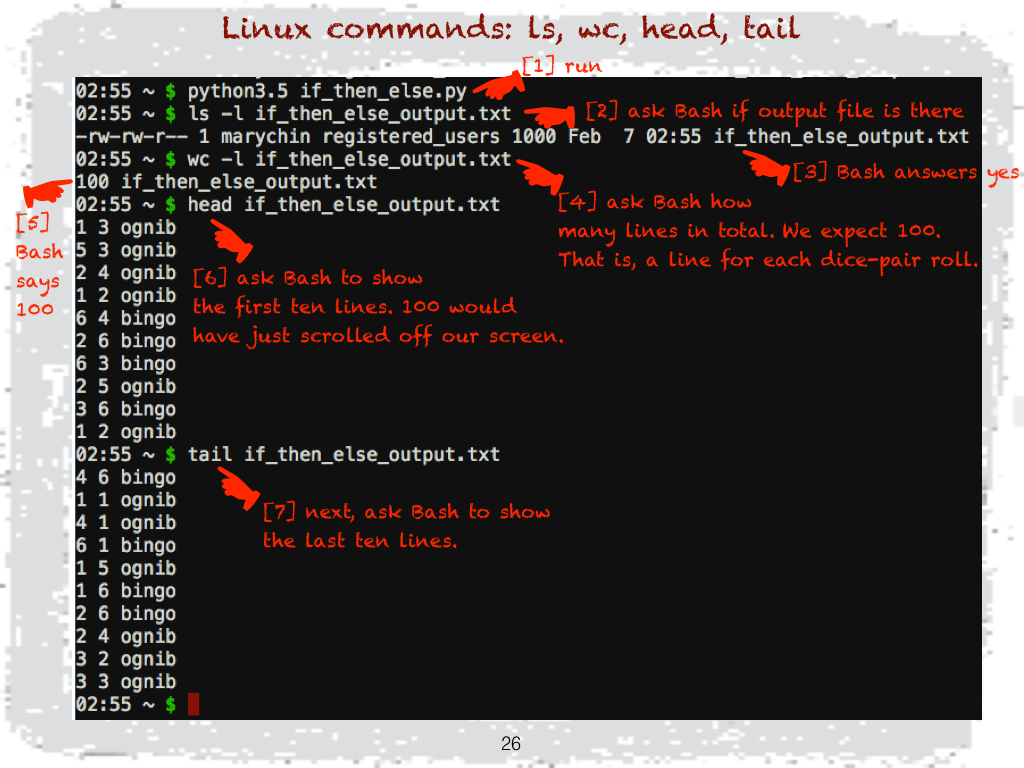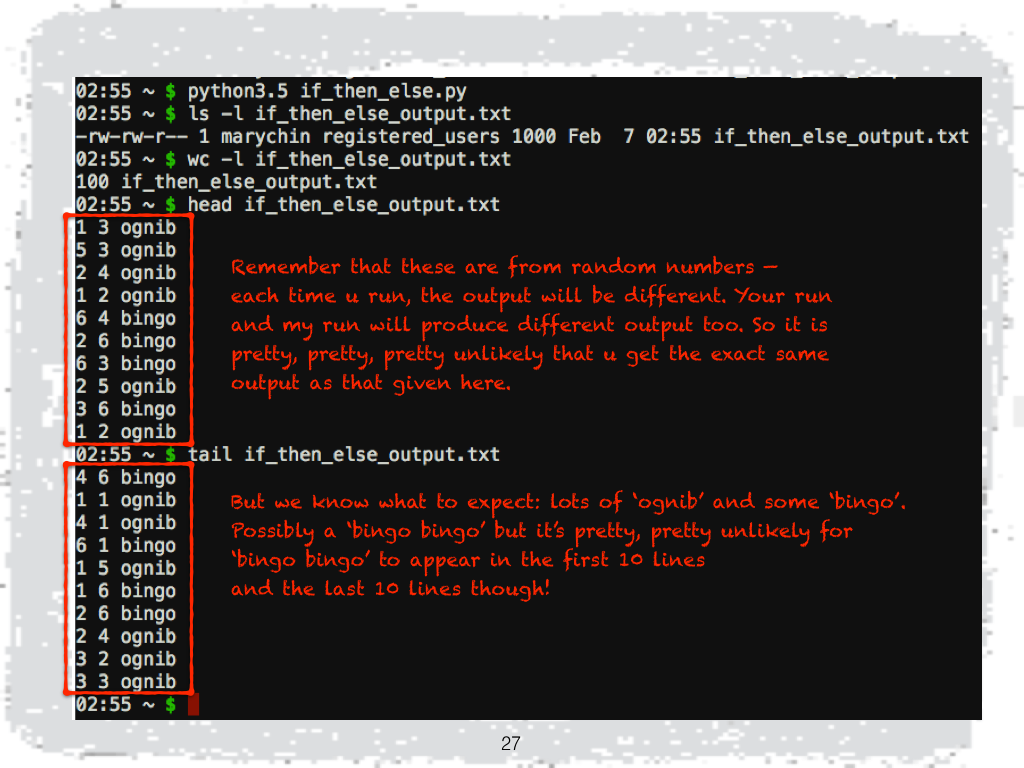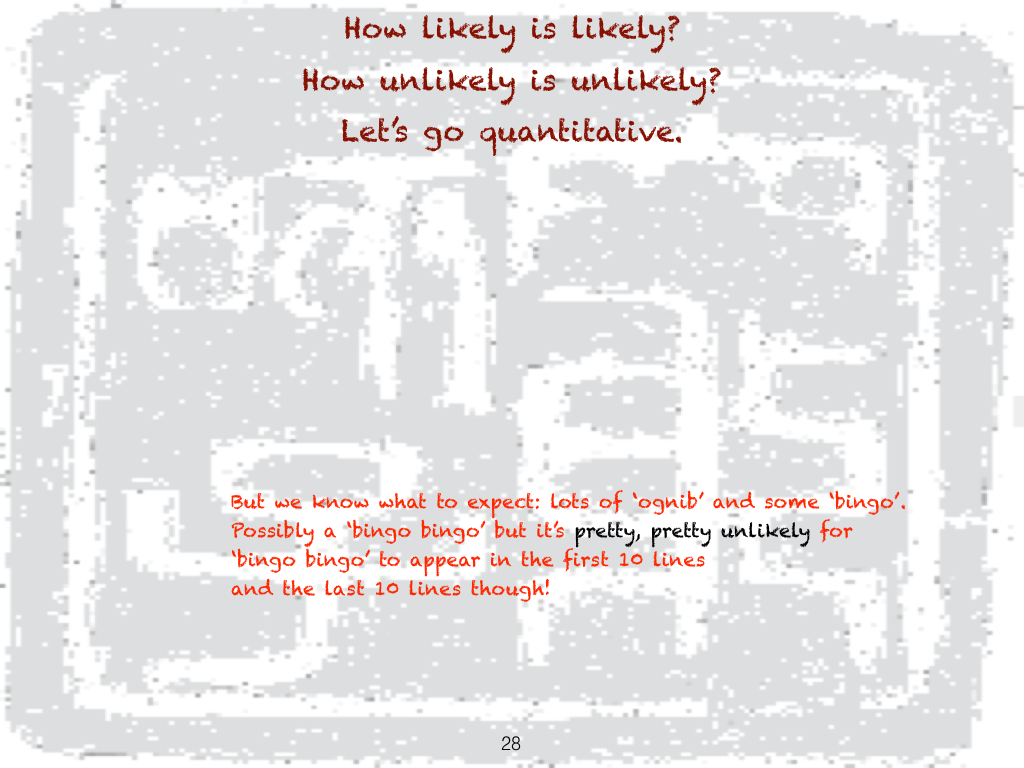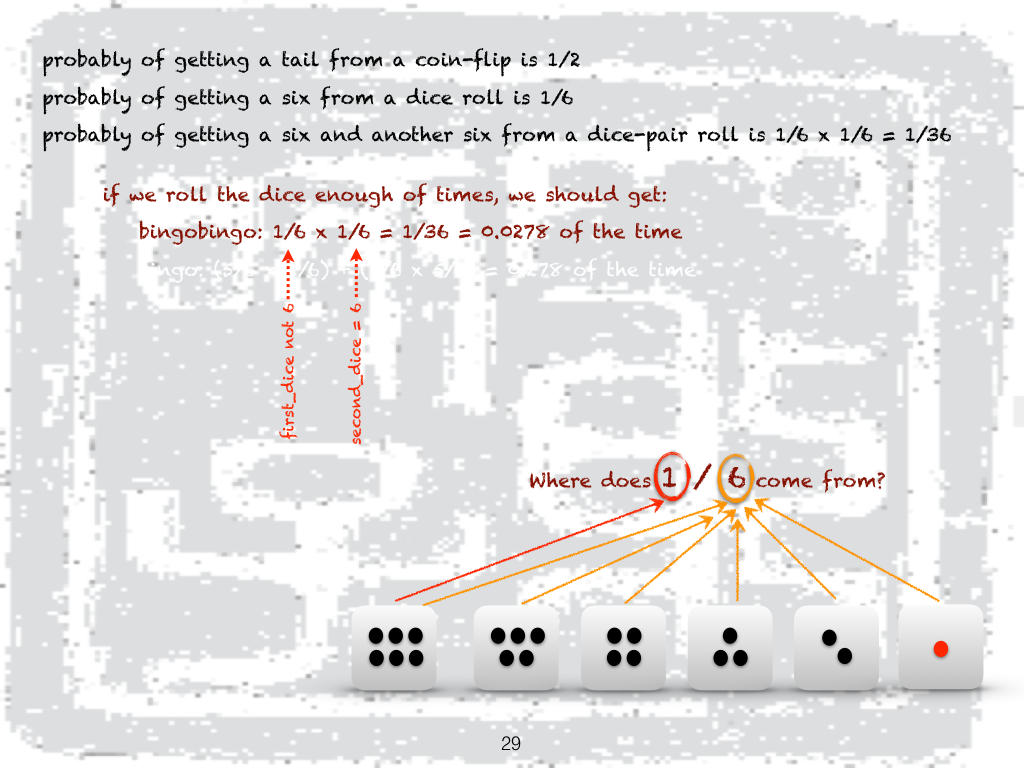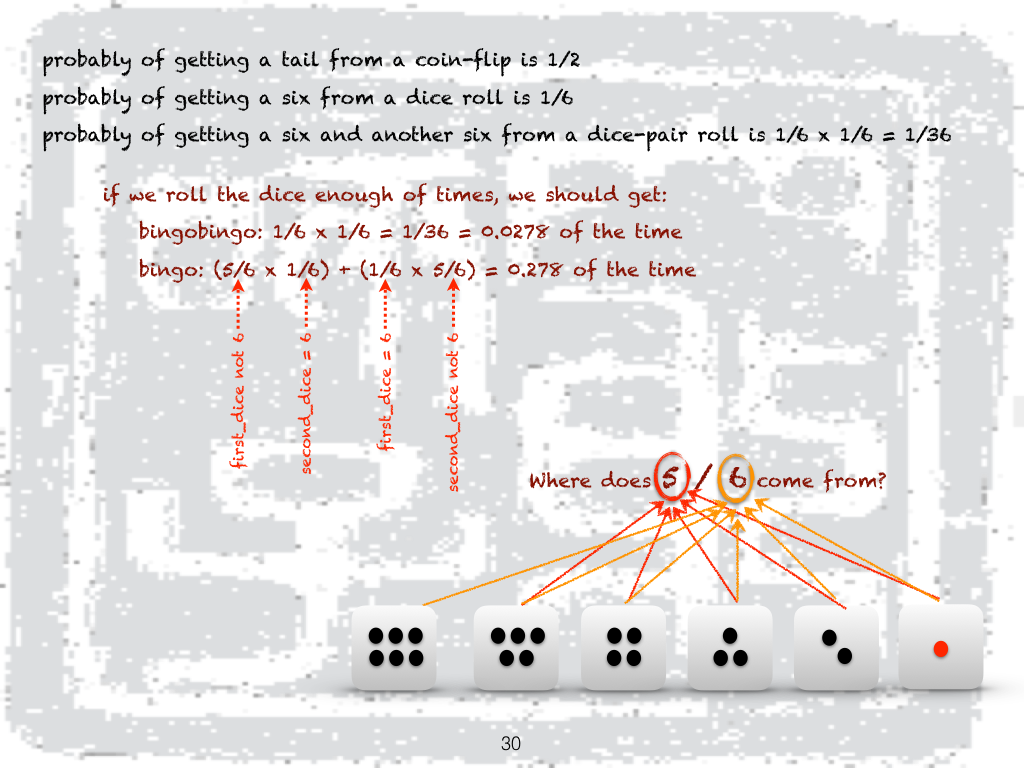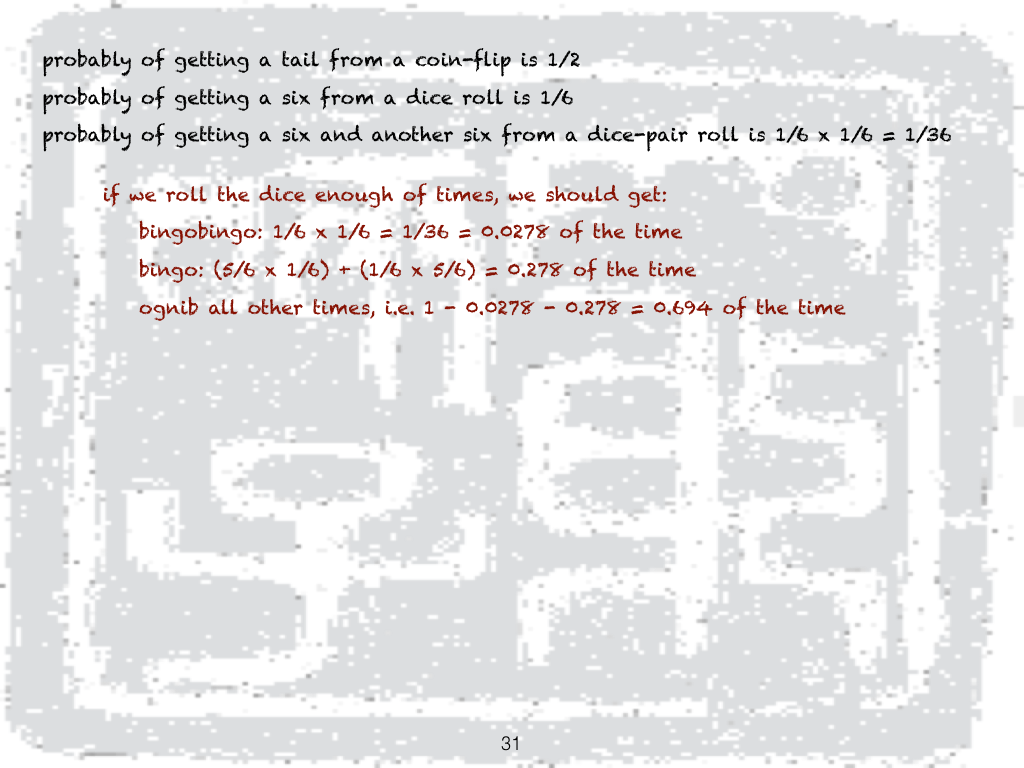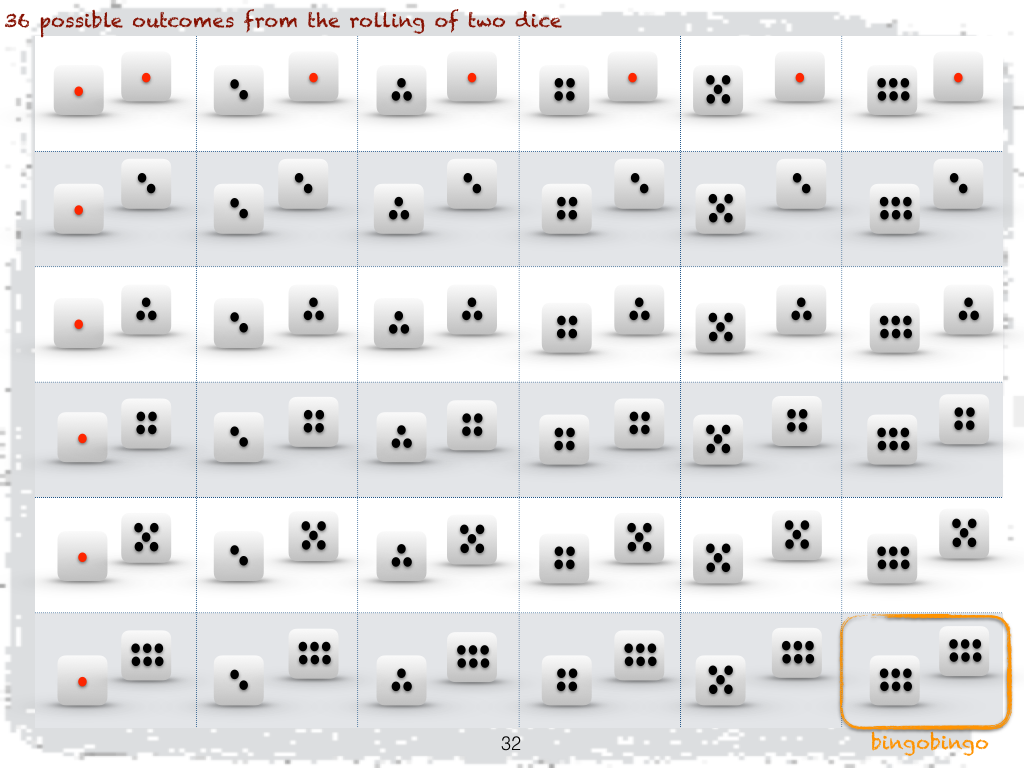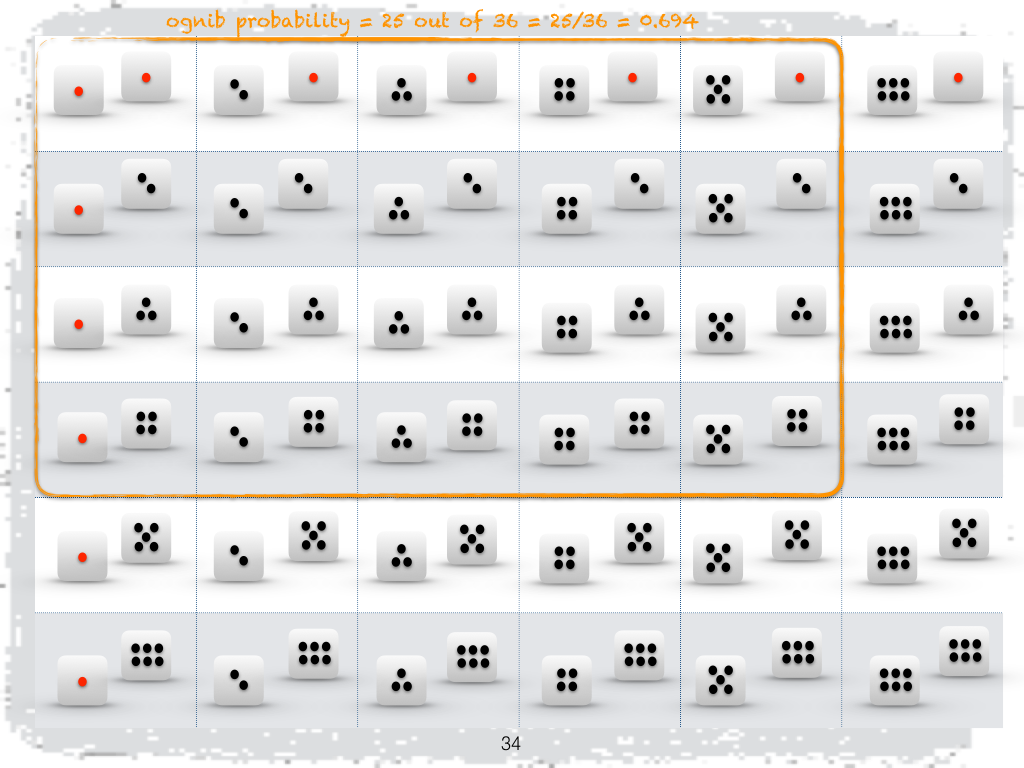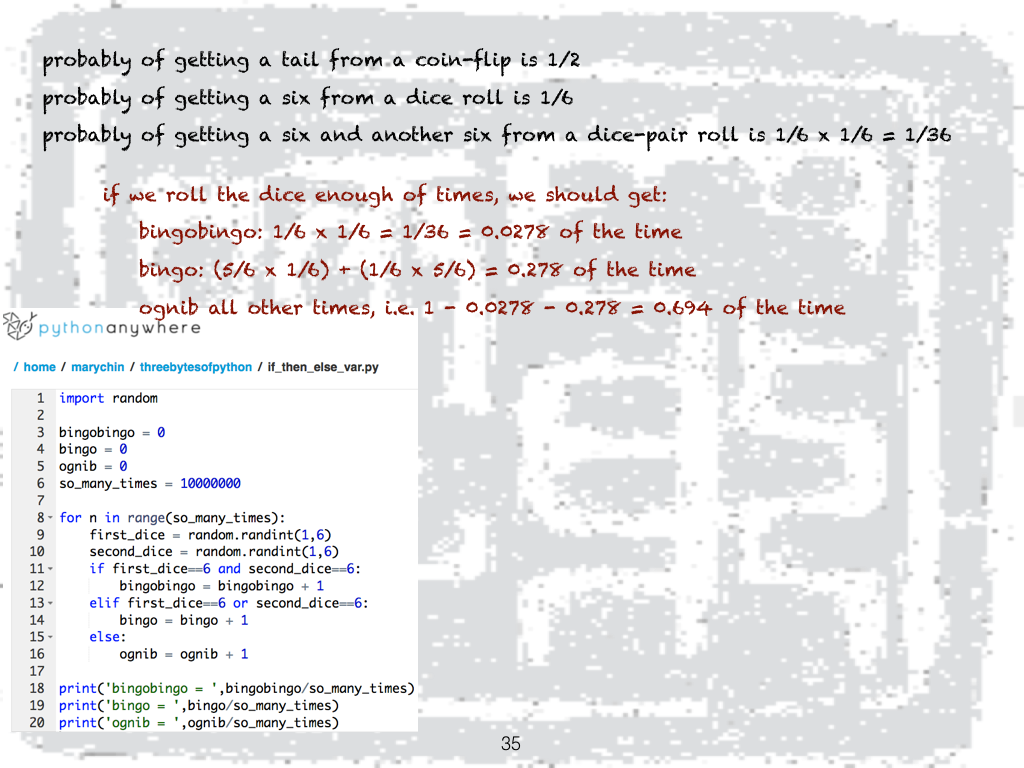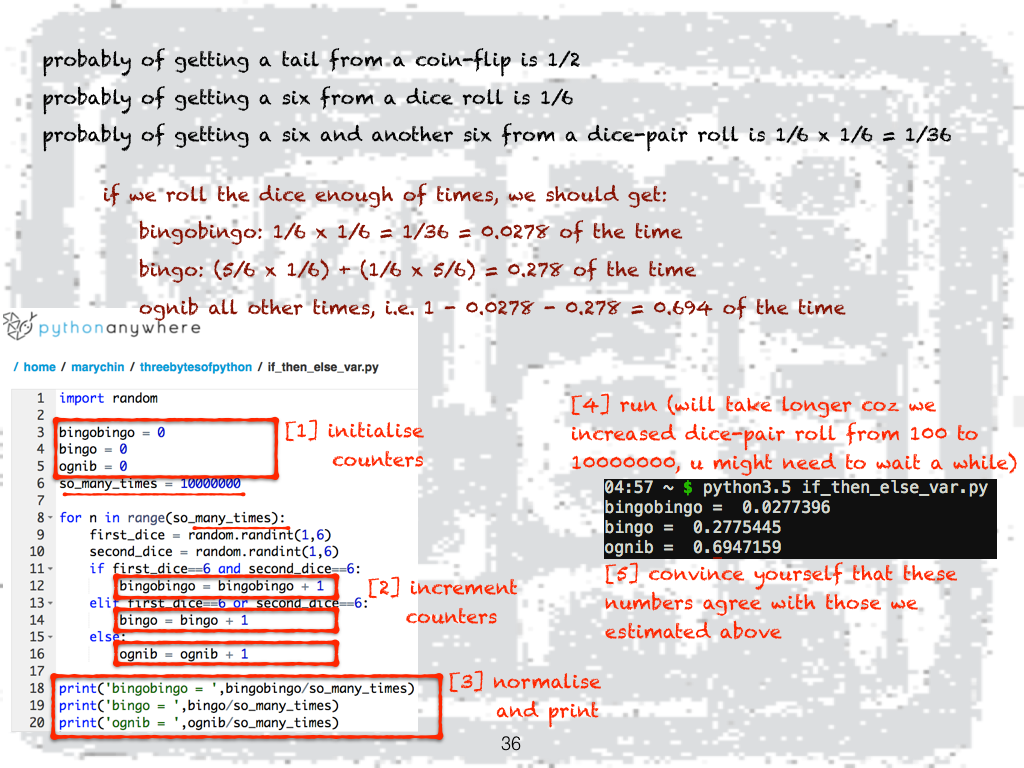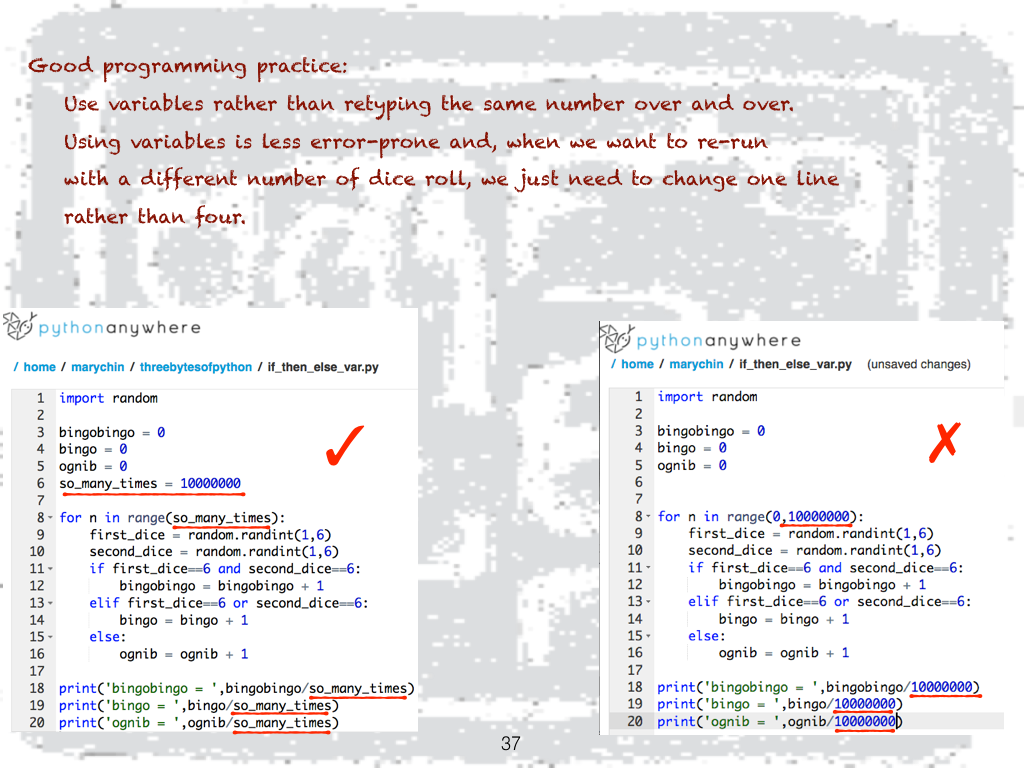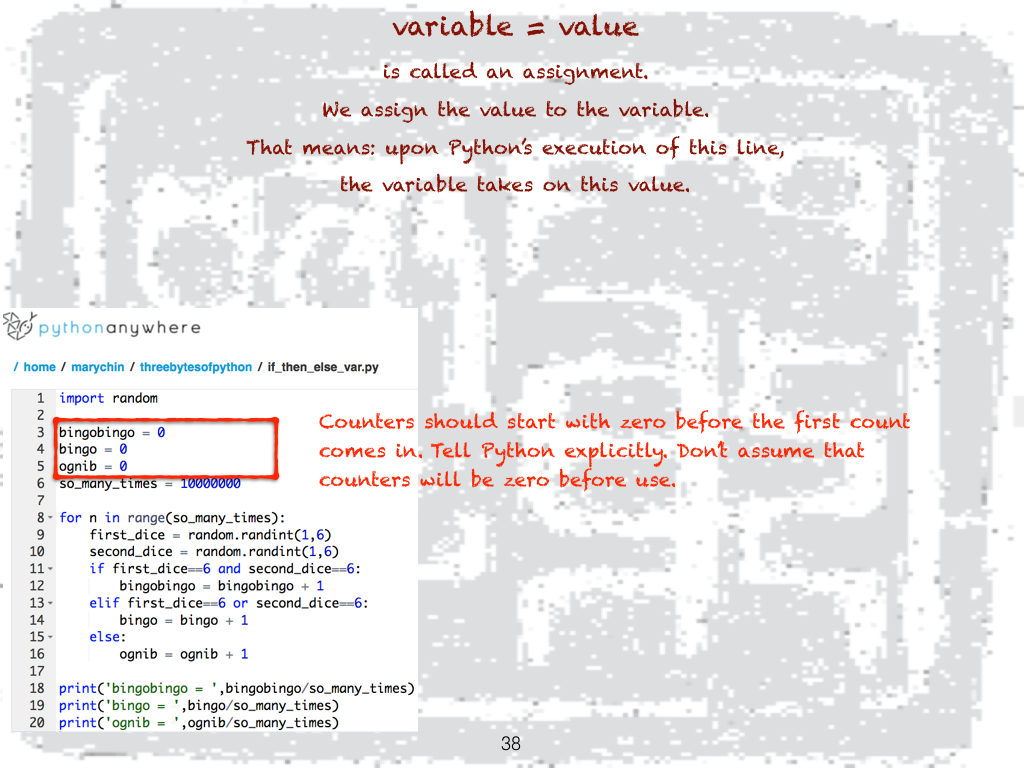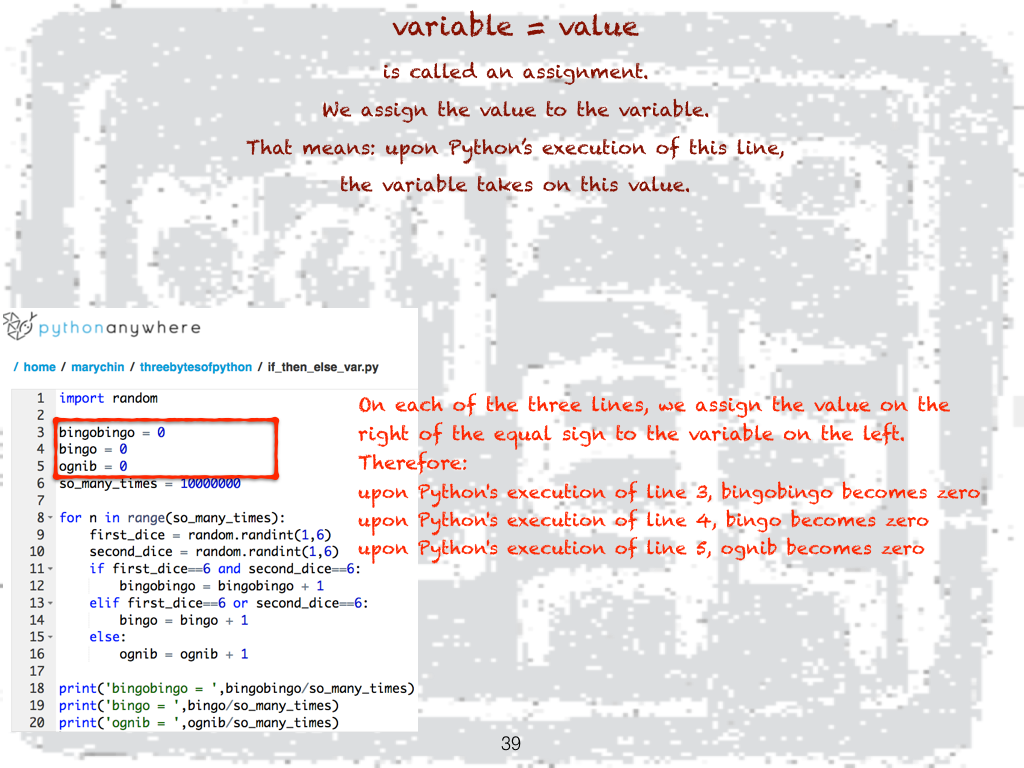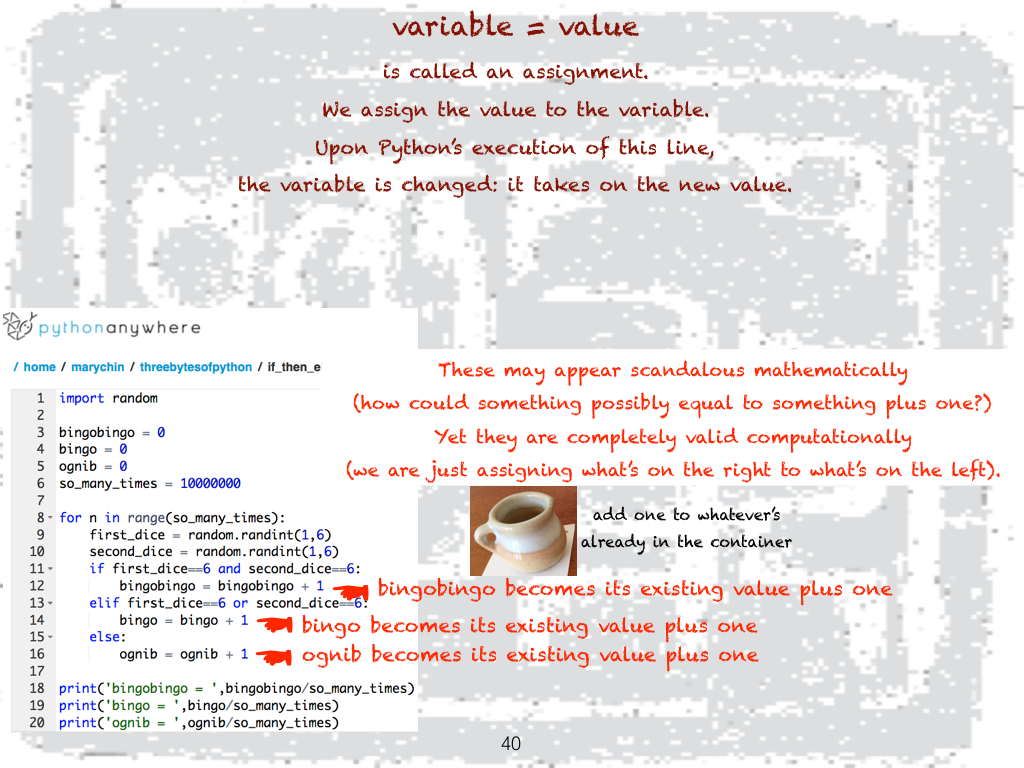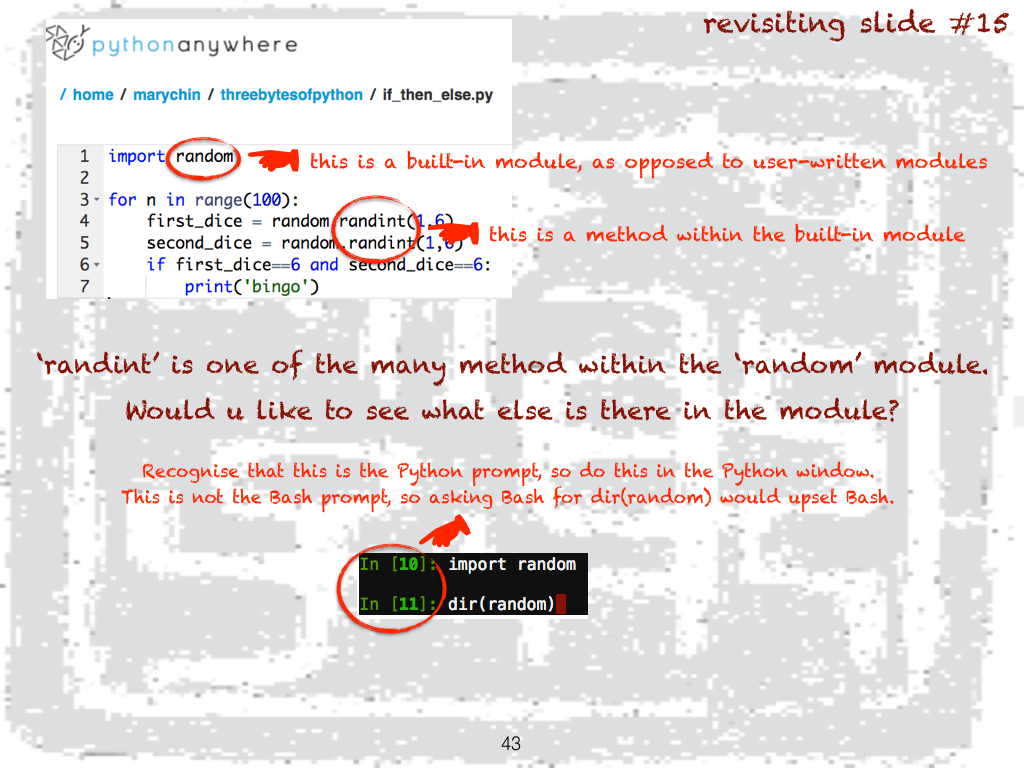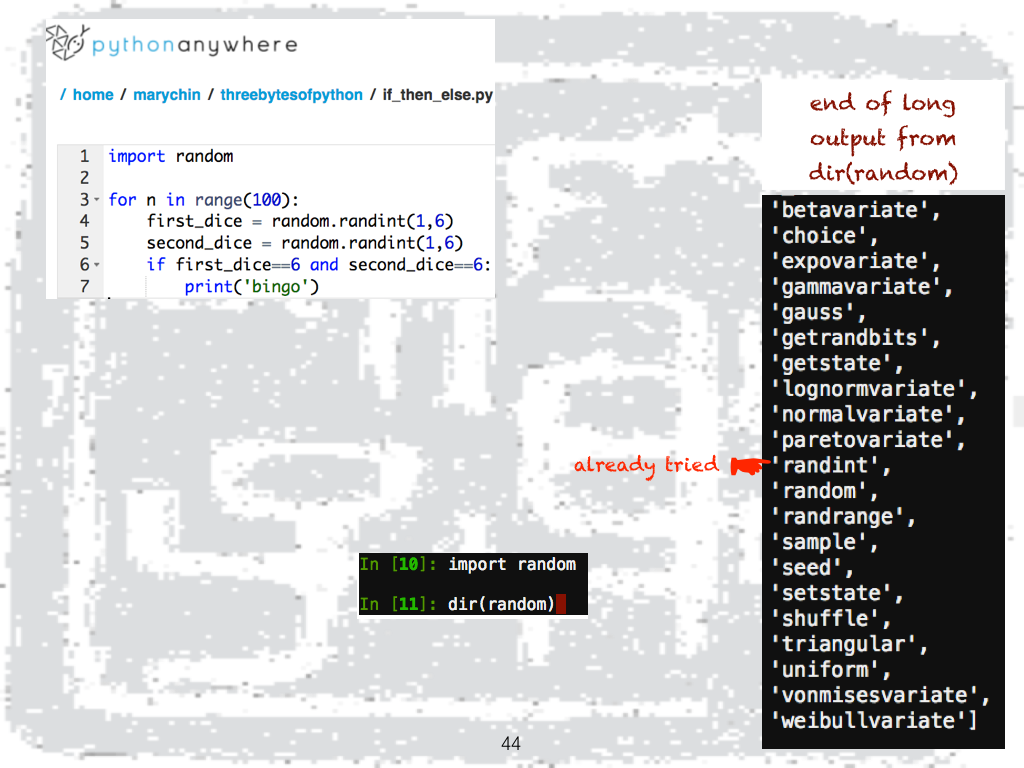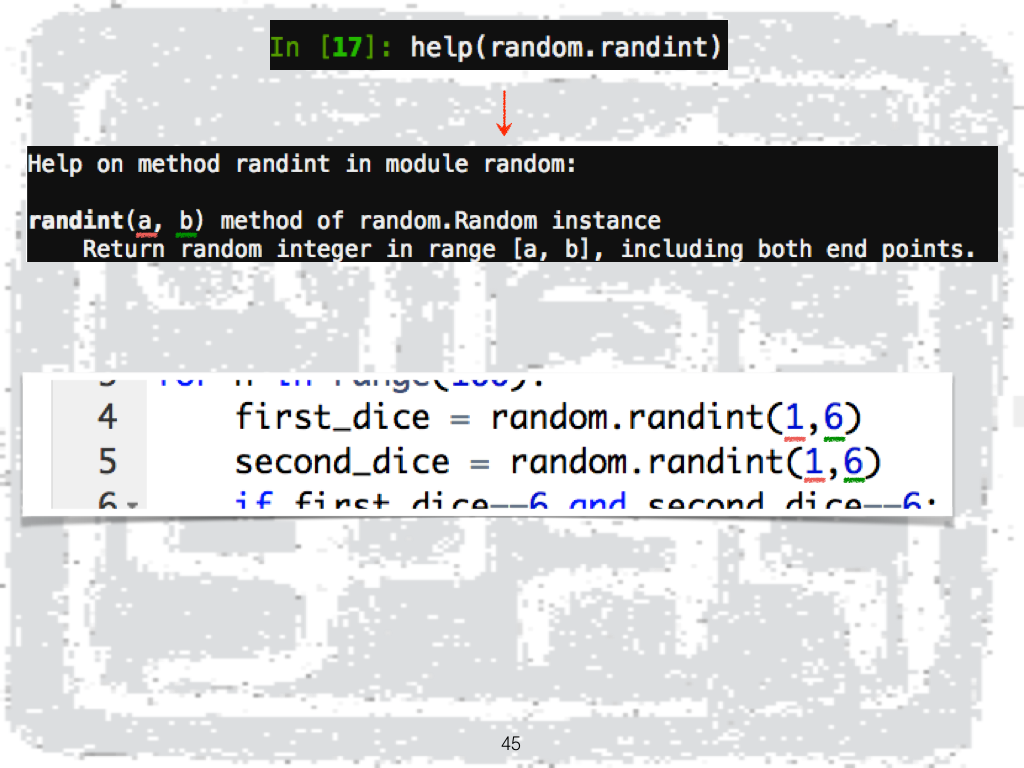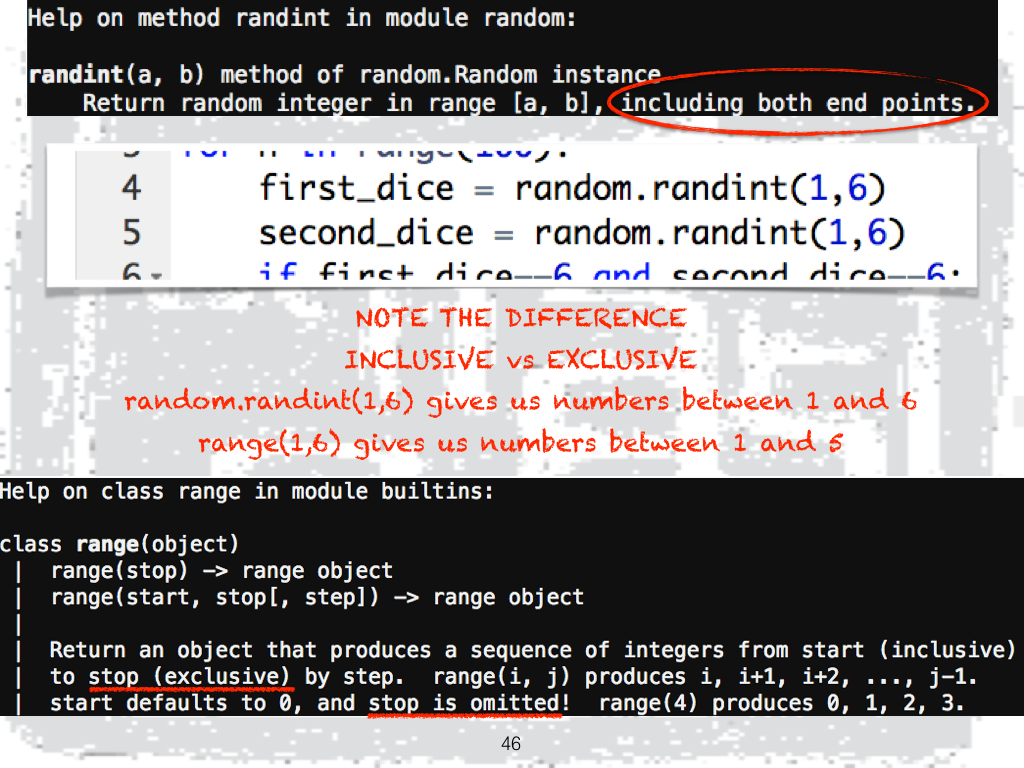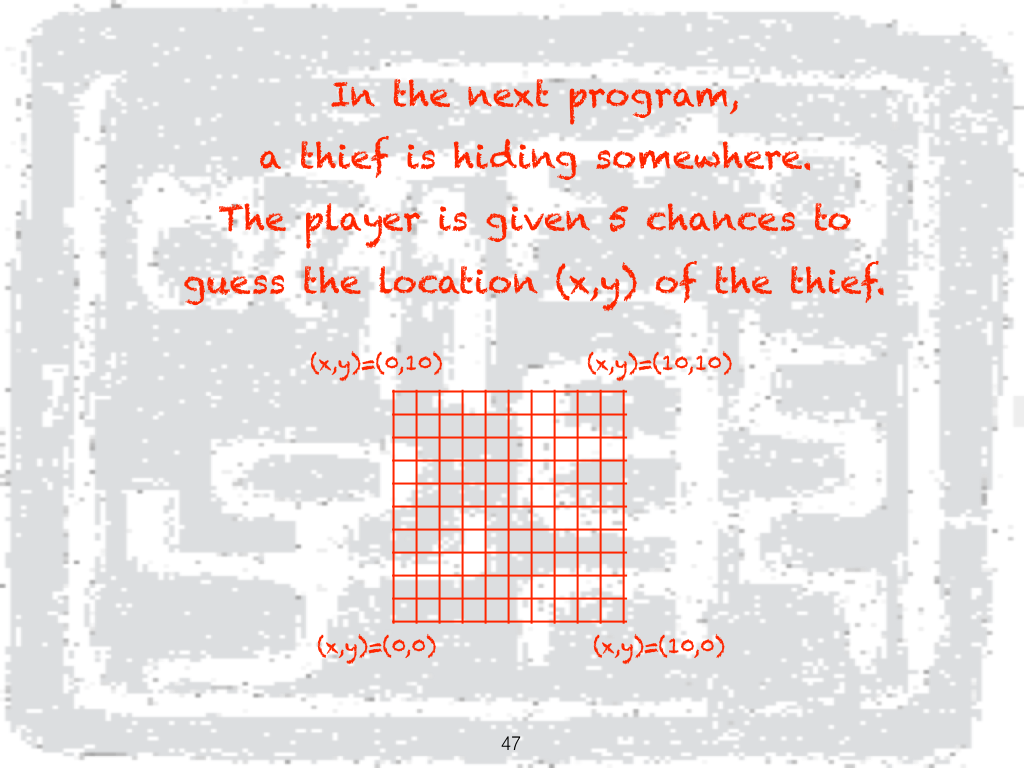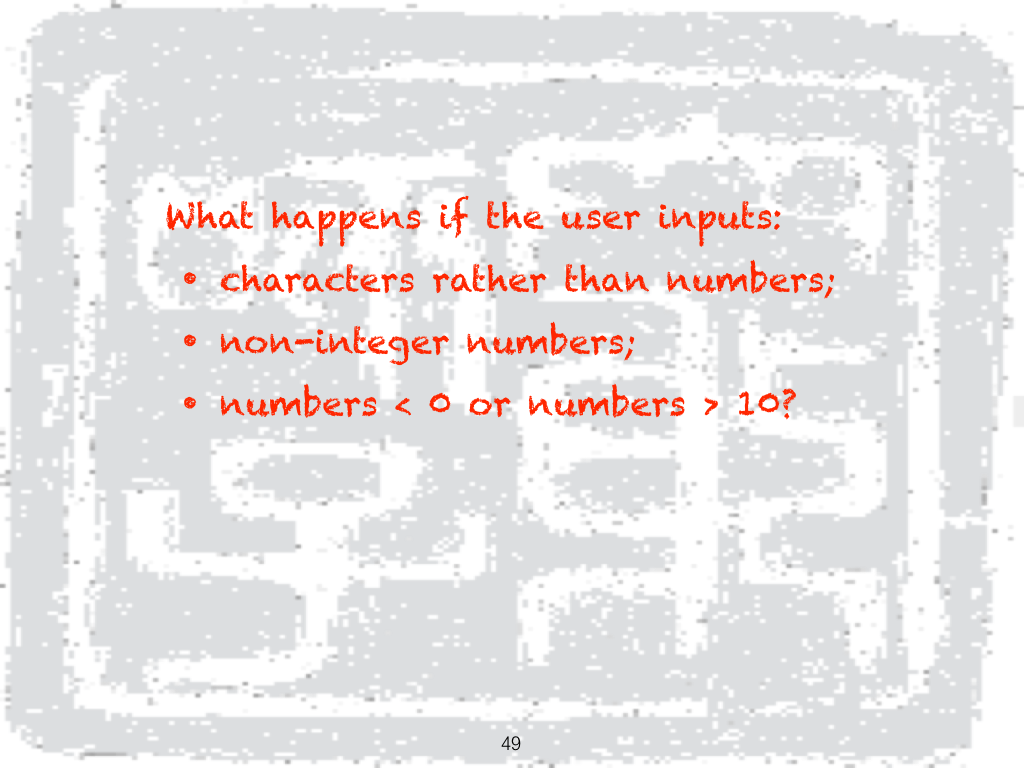Python III
Mary PW Chin 钱碧慧博士
Conditionals & random numbers
Slides here are continuously being revised and updated. If you have been here before, your browser might have some old files cached. To ensure that you see the latest version, please follow the instructions given in the following link: ☞ how to clear browser cache .
Synopsis
The import keyword;
module random and its method randint ;
conditionals: if-elif-else ;
relational operators;
assignment vs comparison;
booleans operators, and vs or ;
variable names: rules and conventions e.g. camel-case;
output to screen (standard output) vs output to file;
Linux commands and options: ls , wc , head , tail ;
basic probability theory;
initialisation, counters and normalisation;
dir ;
more flowcharting.
Exercise
For the program on slide #19 mark out the:
variable names;
arguments;
functions;
keywords;
modules;
methods;
Repeat Exercise 1 for the program on slide #23.
Repeat Exercise 1 for the program on slide #35.
Is each of the following a legal variable name in Python?
mickey-mouse;
mickey.mouse;
mickey mouse;
2mickey mice.
Refer to the program on slide #35. What difference would you expect if we change
range(-100, so_many_times-100) ;
range(so_many_times+1000, 1000, -1) ;
range(0, so_many_times*1000, 1000) ?
Refer the program on slide #38. What happens if we change elif to if ? Draw the revised flowchart.
Write a program to generate two random numbers between 0 and 100. Print the larger number, and the sum, difference and product of the two numbers.
Write a program to generate a random number between 0 and 10. Take the number as the radius of a circle. Print the diameter, circumference and area of this circle. You can get the value for π by first importing the math module; the value for π is then accessible as math.pi .
Write a program to generate a random number between 0 and 100,
take the random number as a temperature in celsius, convert that to fahrenheit;
take the random number as a measurement in centimetres, convert to and inches;
take the random numner as a weight in kilograms, convert to pounds.
Write a program simulating the draw of Magnum 4D first prize.
What we have learned so far
Python keywords:
for
in
import
as
if
elif
else
and
or
Python built-in functions:
print(…, end='…')
range(…, …, …)
help(…)
dir(…)
Python modules and methods:
random.randint(…, …)
math.pi
Linux commands (and options):



